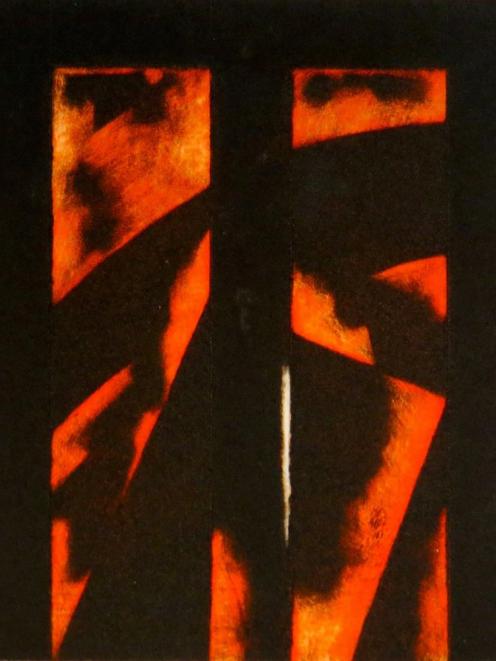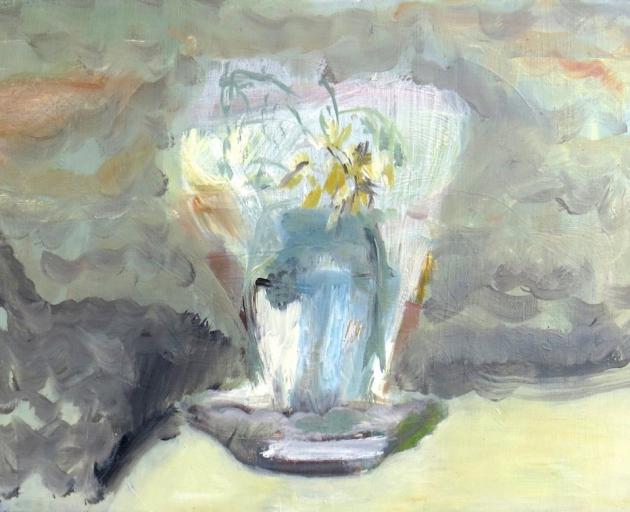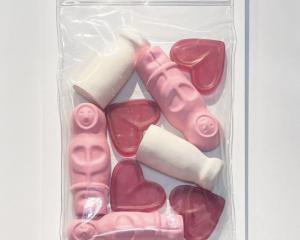In this week's Art Seen, James Dignan looks at exhibitions from Gordon Walters, John Drawbridge, and the Inge Doesburg Gallery.
 Painting No.1 (1965), by Gordon Walters (Auckland Art Gallery Toi o Tamaki collection, courtesy of the Walters Estate)
''New Vision'', Gordon Walters (Dunedin Public Art Gallery)
Painting No.1 (1965), by Gordon Walters (Auckland Art Gallery Toi o Tamaki collection, courtesy of the Walters Estate)
''New Vision'', Gordon Walters (Dunedin Public Art Gallery)

Dunedin is blessed by a major, must-see retrospective of the work of one of the country's most important abstract artists.
Gordon Walters, who died in 1995, is widely known for his repetitive designs based on stylised koru, and these works are a major part of the exhibition. These pieces are a revelation. While we have likely seen these images before, seeing them in the flesh and in a large array they become hypnotic and overwhelming.
The exhibition traces the artist's career, allowing us to see the steps leading from figurative art to minimalist abstraction. The exhibition is arranged roughly chronologically and is extensively and meticulously annotated and accompanied by substantial material detailing the artist's working processes.
We see the artist's increasing interest in traditional Maori and Pacific island design, as well as the influence of friend and ethnologist Theo Schoon. A side-by-side comparison of Walters' experimentations and Schoon's photographs of rock carvings makes it clear where much of Walters' inspiration came from.
The artist never stopped experimenting, and the final room of the exhibition shows later work that moves away from the koru design. The works continue to be of influence today, with Maori artists such as Darryn George modifying and reclaiming the style as a modern extension of Maori art.
 Phoenix, by John Drawbridge
''John Drawbridge'' (Fe29 Gallery)
Phoenix, by John Drawbridge
''John Drawbridge'' (Fe29 Gallery)

If one retrospective of a noted New Zealand abstractionist is not enough, there is another at St Clair's Fe29 Gallery. The gallery is presenting an impressive overview of John Drawbridge's work, covering art from the late 1950s through to the artist's death in 2005.
As with the Walters display, we see in this exhibition the gradual moves from representationalism (as epitomised by the fine etching Approach to Blois, Artois) to the strong, colour-field inspired work of the 1990s. Unlike Walters, Drawbridge did not abandon Western art tradition entirely, and the influence of artists from Matisse to Malevich is alluded to in several of the pieces.
Neither was representational art totally expunged. In works such as a delicate 1983 nativity scene, Drawbridge shows that he could move effectively between styles.
The artist was also adept at moving between media. The exhibition includes bold oils, effectively stark mezzotints, and soft, subtle pastelwork - all an indication of the scope of his talents. The last printed works, from the early 2000s, were largely done in collaboration with Drawbridge's son Cameron, as the artist slowly succumbed to failing health.
Even in these last works, there is a strength and dynamic creativity which speak of the artist continuing to give powerfully of his art for as long as he could.
 Daffodils I, by Nicola Hansby
''2018 New Year Group Show'' (Inge Doesburg Gallery)
Daffodils I, by Nicola Hansby
''2018 New Year Group Show'' (Inge Doesburg Gallery)

The Inge Doesburg Gallery has opened the year with a group show featuring works by 20 artists. Works range widely in style and medium, with a number of attractive pieces on display.
A strong impressionist element pervades quite a few of the pieces, most clearly shown in two works each by Francis Nicholls and Nicola Hansby. The former's richly coloured, half-sensed landscapes and the latter's softer palette still lifes are equally eye-catching. Other works revel in pure abstraction, these ranging from Jonathan Otley's bold colourfield blocks and the gestural paintwork of Kirsten Ferguson and Peter Cleverley to Georgina Young's dense embroidered forms.
Among the other art on display, Motoko Kikkawa's airy botanical mixed media piece is a delight, as too is Inge Doesburg's moody harbourscape.
Fiona van Oyen's obsessive lace-like cutout work is also very pleasing. Michael Greaves also impresses with a study in light and form, its mysterious blue stone floating before a cloudy backdrop.
Kathryn Madill's two evocative works are standouts, with their enigmatic scenes filled with some untold narrative. Blue Mine, in particular, is a haunting image, with its lone protagonist standing at the edge of the titular darkness before a sky filled with foreboding.








![Untitled (c. mid 1990s, [pink 3]), by Martin Thompson, 415mm×590mm. Photo: courtesy of Brett...](https://www.odt.co.nz/sites/default/files/styles/odt_landscape_small_related_stories/public/story/2024/02/untitled_pink_3.jpg?itok=Q0aQrc9o)



